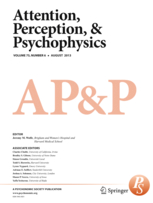- A
- A
- A
- ABC
- ABC
- ABC
- А
- А
- А
- А
- А
- HSE University
- Faculties
- Faculty of Social Sciences
- School of Psychology
- News
- Driving forces in free visual search: An ethology – New publication in Attention, Perception, & Psychophysics
-
Education
-
The School
- About
-
Laboratories
-
- The Scientific-Educational Laboratory of Ability Psychology
- Center for Sociocultural Research
- International Laboratory of Positive Psychology of Personality and Motivation
- Laboratory for Cognitive Research
- Cognitive Psychophysiology Laboratory
- Vision Modelling Laboratory
- Laboratory for the Neurobiological Foundations of Cognitive Development
-
- Partners
- Staff Members
- International Cooperation
Phone: +7 (495) 772-95-90 *15366
Email: dekpsy@hse.ru
Address: 101000, Moscow, Armyanskiy per. 4, c2
Address for correspondence: 20 Myasnitskaya Ulitsa Moscow 101000 (School of Psychology)
In press
Popyvanova A., Pomelova E., Bredikhin D. et al.
IEEE, 2024.
Zaidi S. G., Orazmukhametova L., Zahra S. K. et al.
TPM - Testing, Psychometrics, Methodology in Applied Psychology. 2025. Vol. 32. No. S8. P. 2025-2035.
Tunkevichus O., Bagrationi K.
In bk.: The Proceedings of the 20th European Conference on Innovation and Entrepreneurship. Vol. 20. Iss. 1. Academic Conferences International Limited, 2025. P. 759-766.
Ivanova M., Germanova K., Petelin D. et al.
Biorxiv. 005140. Cold Spring Harbor Laboratory, 2024
The School promotes cutting-edge research, multidisciplinary studies, education in English. We are increasing the number of courses in English all the time and have started two English-speaking Master’s Programs. Our researchers have access to Eye trackers, TMS, multi-channel EEG, MEG and fMRI techniques.
The School also aims to train psychologists, who can apply their knowledge in the fields of economics, banking, human resources management, organizational development, ecopsychology and team-building.

Driving forces in free visual search: An ethology – New publication in Attention, Perception, & Psychophysics
 MacInnes, W. J., Hunt, A., Hilchey, M., & Klein, R. (2014). Driving forces in free visual search: An ethology. Attention, Perception, & Psychophysics, 1–16. doi: 10.3758/s13414-013-0608-9
MacInnes, W. J., Hunt, A., Hilchey, M., & Klein, R. (2014). Driving forces in free visual search: An ethology. Attention, Perception, & Psychophysics, 1–16. doi: 10.3758/s13414-013-0608-9Abstract
Visual search typically involves sequences of eye movements under the constraints of a specific scene and specific goals. Visual search has been used as an experimental paradigm to study the interplay of scene salience and top-down goals, as well as various aspects of vision, attention, and memory, usually by introducing a secondary task or by controlling and manipulating the search environment. An ethology is a study of an animal in its natural environment, and here we examine the fixation patterns of the human animal searching a series of challenging illustrated scenes that are well-known in popular culture. The search was free of secondary tasks, probes, and other distractions. Our goal was to describe saccadic behavior, including patterns of fixation duration, saccade amplitude, and angular direction. In particular, we employed both new and established techniques for identifying top-down strategies, any influences of bottom-up image salience, and the midlevel attentional effects of saccadic momentum and inhibition of return. The visual search dynamics that we observed and quantified demonstrate that saccades are not independently generated and incorporate distinct influences from strategy, salience, and attention. Sequential dependencies consistent with inhibition of return also emerged from our analyses.
- About
- About
- Key Figures & Facts
- Sustainability at HSE University
- Faculties & Departments
- International Partnerships
- Faculty & Staff
- HSE Buildings
- HSE University for Persons with Disabilities
- Public Enquiries
- Studies
- Admissions
- Programme Catalogue
- Undergraduate
- Graduate
- Exchange Programmes
- Summer Schools
- Semester in Moscow
- Business Internship
- © HSE University 1993–2025 Contacts Copyright Privacy Policy Site Map
- Edit


